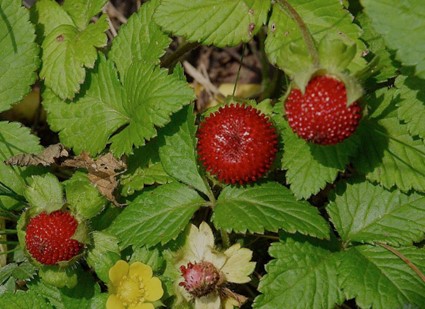In this Artal article we will discover the benefits of amino acids in agriculture, starting with understanding what amino acids are and what they do to contribute to the development of crops.
Amino acids are essential for plant metabolism, improving the absorption of nutrients and strengthening the natural defenses of plants.
In addition, we will introduce you to Vegeamino, one of Artal’s amino acids, of plant origin. Let us begin!

What are amino acids and what are they for?
Amino acids are organic molecules essential for the growth and development of plants, constituting the fundamental blocks of proteins
They are key intermediaries in numerous metabolic processes, facilitating the synthesis of proteins, enzymes and hormones.
In addition, they play crucial roles in the uptake and transport of nutrients, the response to biotic and abiotic stress, the improvement of crop quality and in dormancy..
In the following sections we will expand on how these amino acids benefit various aspects of current agriculture:
They reduce stress on plants
Amino acids regulate and protect crops during adverse conditions. They help maintain osmotic balance and cellular homeostasis, improving plant tolerance to stressors such as drought, cold, extreme heat and disease.
In addition, amino acids facilitate the synthesis of secondary metabolites and antioxidants that protect against oxidative damage, achieving healthy and sustainable growth even in difficult environments.

Get optimal flowering
Fertilizing with amino acids helps in optimal flowering in plants by influencing several key physiological and biochemical processes. They act as precursors in the synthesis of floral hormones and in the regulation of the formation and development of floral structures.
Amino acids also improve the absorption of essential nutrients necessary for floral development. Thus, flowering is more vigorous, since the number and quality of the flowers increases.
They improve nutrients’ absorption capacity
They act as natural chelators, facilitating the absorption of minerals and, as we have mentioned, essential nutrients and micronutrients such as nitrogen, phosphorus and potassium.
They promote the activity of enzymes responsible for breaking down nutrients into simpler forms that can be assimilated by plant roots.
Thus, in addition to optimizing efficiency in the use of nutrients, they also strengthen the root system and improve the resistance of plants to adverse environmental conditions.

They stimulate plant growth
Another benefit of amino acids is that they act as promoters of cellular and metabolic development.
They actively contribute to protein synthesis and the regulation of cell division, the elongation of stems and roots, and the formation of plant tissues.
In addition, amino acids participate in the activation of plant growth hormones, such as auxins and cytokinins.
This overall growth stimulus also strengthens their ability to resist diseases and adverse environmental conditions.
The role of amino acids in plant dormancy
Dormancy is a state of rest or dormancy in which plants cease their growth and development to survive adverse environmental conditions such as cold, heat, drought or lack of light.

How do amino acids influence dormancy?
-
- Dormancy signals: Amino acids can act as signals that induce or break dormancy. For example, abscisic acid (ABA) is an amino acid that promotes dormancy by inhibiting growth. On the other hand, gibberellins (GAs) are plant hormones that contain amino acids and antagonize ABA, promoting germination and growth.
-
- Protection against stress: Amino acids also play a fundamental role in protecting plants against stress during dormancy. They accumulate osmolytes, such as proline, which help cells retain water and tolerate dehydration. Additionally, amino acids can act as antioxidants, neutralizing harmful free radicals that are produced during stress.
-
- Protein synthesis: Amino acids are essential for the synthesis of proteins, which are key structural and functional components of plant cells. During dormancy, plants synthesize specific proteins that allow them to survive adverse conditions and resume growth when conditions are favorable.

Applications in agriculture
-
- Breaking dormancy: The application of exogenous amino acids, such as GAs, can be useful to break the dormancy of seeds or buds when environmental conditions are not suitable for germination or natural sprouting.
-
- Improve stress tolerance: Fertilizers rich in amino acids can help plants improve their tolerance to abiotic stresses, such as drought, cold or salinity, during dormancy.
In summary, amino acids are multifunctional molecules that play a crucial role in plant dormancy.
They include dormancy signals, protect plants against stress and are essential for protein synthesis during this period of rest.
Get to know Artal Vegeamino

At Artal we have different amino acids for plants, such as VEGEAMINO.
This is a bioactivator formulated with free amino acids obtained by hydrolysis of plant proteins, designed to activate the physiology and hormonal processes of plants.
It stimulates chlorophyll function and promotes vegetative development by facilitating the assimilation of essential trace elements, enhancing their effect when applied in combination with them.
In addition, VEGEAMINO reinforces the action of fungicides and insecticides, so we recommend mixing it with them.
VEGEAMINO is especially beneficial before and during sprouting, advancing the development of the crop and strengthening the plants’ resistance to diseases.
These amino acids in plants are ideal for young plants, recently transplanted, and during critical stages of growth, as well as to mitigate stress situations.
This bioactivator is suitable for a wide range of crops, including fruit trees (seed and stone), citrus, horticultural, cereals and ornamentals.

On our website we have other types of amino acids such as AMINOTAL and AMINOTAL SUPER. If you have any questions about which one is suitable for your crops, contact us.



